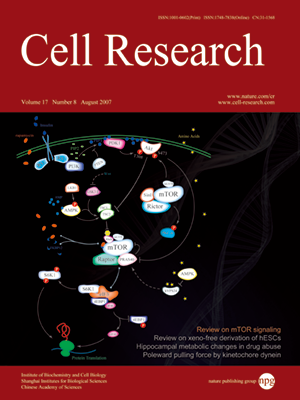
Volume 17, No 8, Aug 2007
ISSN: 1001-0602
EISSN: 1748-7838 2018
impact factor 17.848*
(Clarivate Analytics, 2019)
Volume 17 Issue 8, August 2007: 682-688
REVIEWS
Xeno-free derivation and culture of human embryonic stem cells: current status, problems and challenges
Ting Lei1, Sandrine Jacob2, Imen Ajil-Zaraa1, Jean-Bernard Dubuisson2, Olivier Irion2, Marisa Jaconi3 and Anis Feki1,2
1Laboratory of Stem Cell Research, Department of Obstetrics and Gynecology, Geneva University Hospitals, Geneva, Switzerland
2Department of Obstetrics and Gynecology, Geneva University Hospitals, Geneva, Switzerland
3Department of Pathology and Immunology, Faculty of Medicine, Geneva University, Geneva, Switzerland
Correspondence: Anis Feki(anis.feki@hcuge.ch)
Human embryonic stem cells (hESC) not only hold great promise for the treatment of degenerative diseases but also provide a valuable tool for developmental studies. However, the clinical applications of hESC are at present limited by xeno-contamination during the in vitro derivation and propagation of these cells. In this review, we summarize the current methodologies for the derivation and the propagation of hESC in conditions that will eventually enable the generation of clinical-grade cells for future therapeutic applications.
Cell Research (2007) 17:682-688. doi: 10.1038/cr.2007.61; published online 31 July 2007
FULL TEXT | PDF
Browse 1989


